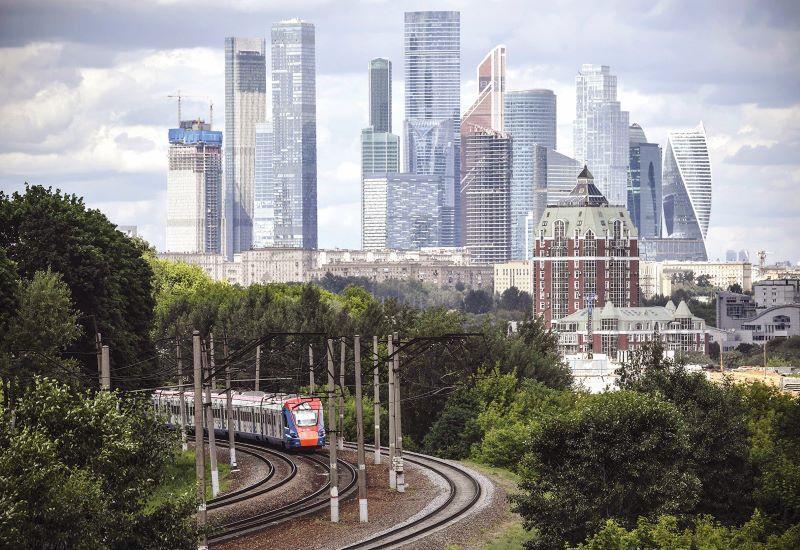New York takes aim at skyscrapers' sky-high energy usage
NEW YORK-Agence France

It's a tall order indeed: How do you make aging, energy-hungry skyscrapers more efficient and less polluting? The city of New York, the historic capital of the skyscraper, is determined to do so by requiring the enormous buildings to drastically curtail their energy consumption.
Traditional skyscrapers are an energy-saver's nightmare, with their vast glass facades, electric lighting everywhere, overly generous use of air conditioning and heating, and elevators by the dozen: they almost seem designed to consume a maximum of energy while emitting copious quantities of greenhouse gases.
If a growing number of newer skyscrapers around the world are designed, from the start, to be energy-efficient -- the Shard in London and Shanghai Tower in China are two examples -- the costs and effort involved in transforming an older building, built decades before the world became conscious of global warming, can be daunting.
And yet those are precisely the buildings targeted by the Climate Mobilization Act, passed in late April by the City Council of the largest U.S. metropolis as part of its commitment to reduce emissions by 80 percent from now through 2050.
The law requires buildings of more than 25,000 square feet (2,300 square meters) to reduce emissions by 40 percent by 2030 from their 2005 levels. It will affect the approximately 50,000 buildings that emit one-third of the city's greenhouse gases.
In targeting the dense building stock, which in total accounts for 70 percent of all New York emissions, the city has adopted a landmark law, said Nilda Mesa, director of the urban sustainability program at Columbia University.
"The Climate Act is really pathbreaking," she told AFP. "It will have a number of positive effects... It will basically create a market and create demand for energy-efficient technologies" which can then be used by other cities, in the US or elsewhere.
Although the law provides long-term borrowing facilities to help property owners, it was vigorously opposed by the powerful real-estate sector, worried by some estimates that the costs of renovation could run more than $4 billion.
But some older buildings, like the Empire State Building, have already begun to address the problem, "showing other people how it can be done," Nilda Mesa said.
That legendary skyscraper, an Art Deco jewel dating from 1931, launched a vast renovation program in 2009 at a cost of $550 million, allowing it to cut its energy consumption by more than 40 percent.
More than 6,500 windows, three million light bulbs and 67 elevators were replaced or renovated to improve the building's insulation and cut its energy consumption, even as it was becoming much more densely occupied.
Engineers also installed an ultra-modern energy management system, constantly optimizing consumption according to the needs of the moment.
With those changes already made -- and paid for in only four years -- Anthony Malkin, chairman and CEO of the Empire State Realty Trust which owns the building, is feeling sanguine about the impact of the new law.
"But we will have to improve for 2030," he says.
Experts point out, however, that reducing emissions is easier for an older tower like the Empire State Building than it will be for the glass-clad skyscrapers that seemed to sprout everywhere starting in the 1970s.
A prime example is Trump Tower, the 58-story skyscraper built by Donald Trump on Fifth Avenue in 1984. It is now one of the most energy-greedy buildings in the city, according to the New York environmental group Align.
New York Mayor Bill de Blasio, who is seeking the Democratic nomination to oppose Trump in the 2020 presidential election, has said Trump Tower could face fines of more than $500,000 a year under the new law.
The Trump Organization has not responded to queries from AFP as to whether it has begun planning for renovation.
But energy updates, even for glass towers, make economic sense when viewed over the long term, said Jacob Corvidae, a building and energy expert with the Rocky Mountain Institute, an environmental association.
The economic pain can be lessened, he said, by timing energy updates to coincide with the major renovation work that big buildings nearly always need every 35 to 40 years, making their cost "marginal."
Another tactic is to adopt a new type of "green lease," in which building owners and tenants share any energy savings that are achieved -- giving tenants incentive to pare back on energy use. In contrast, most building owners in New York today build energy costs into the rent, so tenants have no idea of the true costs.
Despite the resistance of building owners to the new law, Mesa is convinced the market will adjust.
"New York is a competitive place," she said.
"Buildings want to have the bragging rights, (and) anybody can look it up how efficient buildings are."
In five to 10 years, she added, resistance will fade and the new law will seem like old news.
















